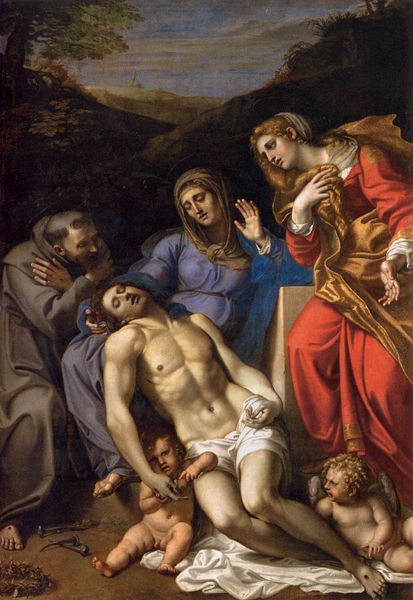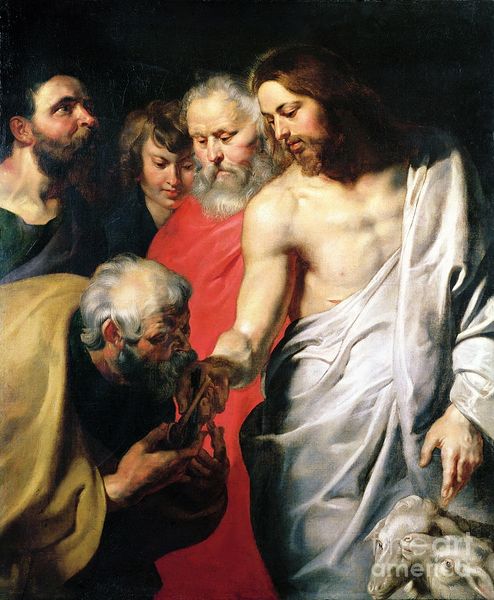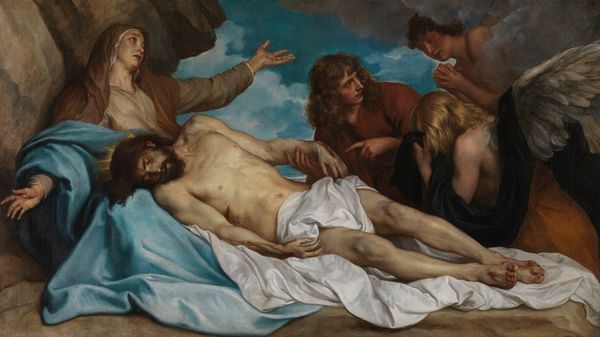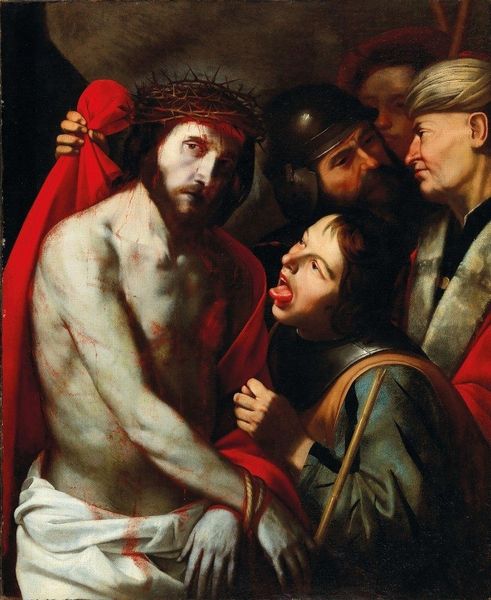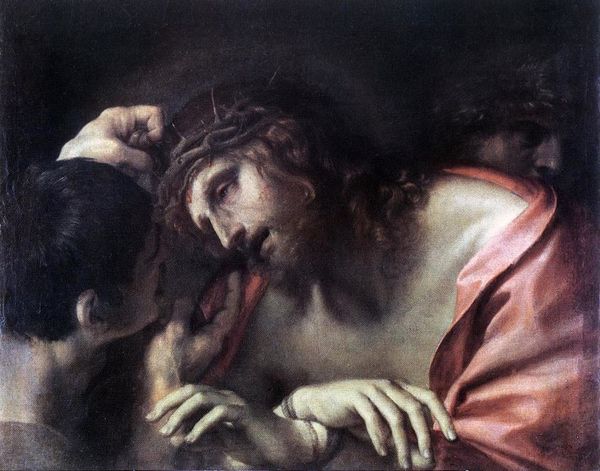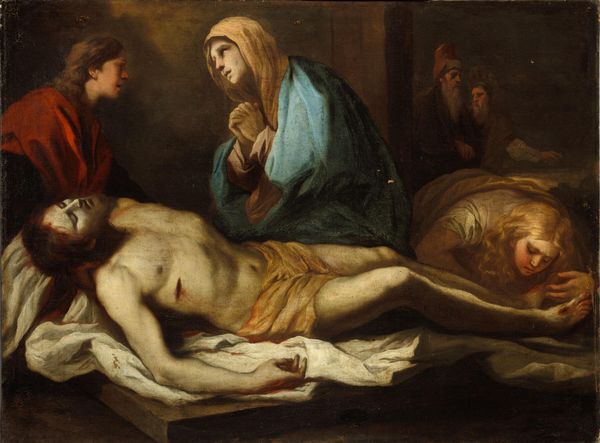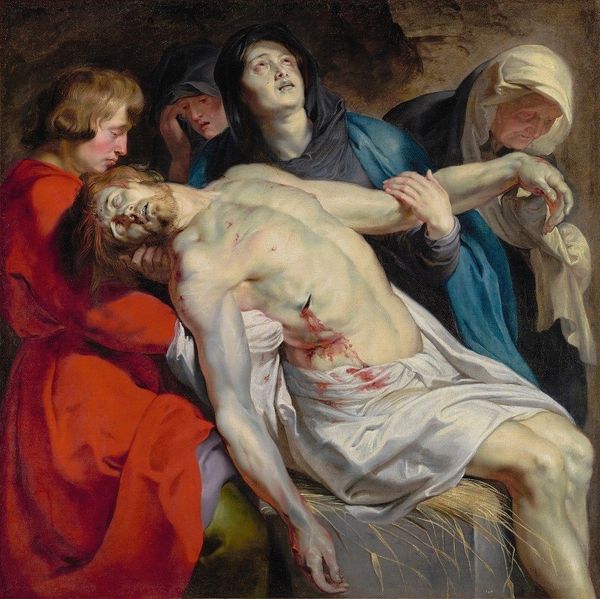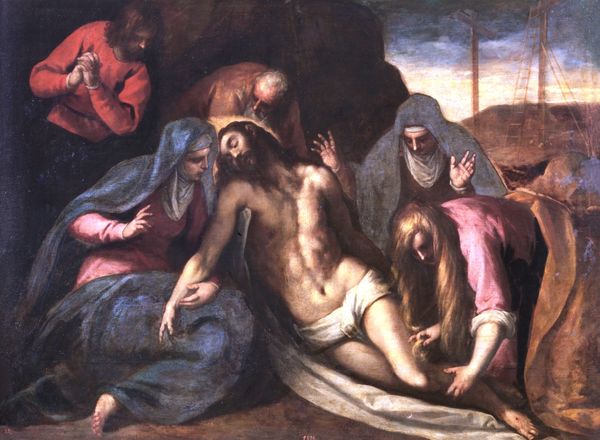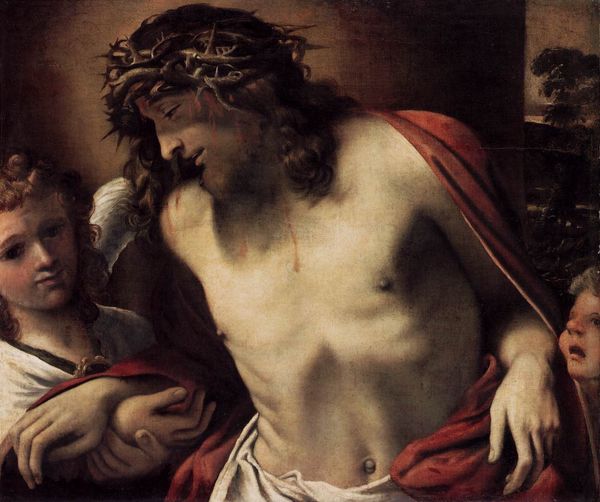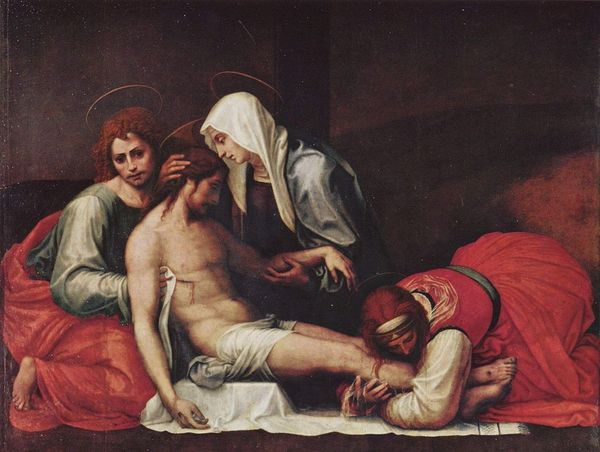
painting, oil-paint
#
baroque
#
painting
#
oil-paint
#
landscape
#
figuration
#
chiaroscuro
#
history-painting
#
realism
Copyright: Public domain
Curator: What a powerful scene. We’re looking at Peter Paul Rubens’ oil painting, "The Lamentation." It powerfully captures the somber aftermath of Christ's crucifixion. Editor: The painting has this almost palpable silence. The figures are arranged around the body with a raw grief, really evoking a sense of loss that feels communal. Curator: Rubens utilizes the chiaroscuro technique masterfully. The figures are illuminated against a darker background, intensifying the drama and drawing our eye directly to the body of Christ. Note how each person reacts to loss individually, their posture expressing both despair and exhaustion. Editor: Exactly! The draped figures also hold so many of the traditional visual signifiers. Look at Mary Magdalene in red, her head cast downwards. Or the tender touch of Mary, tracing the lines of Christ's face as though trying to revive a memory. Those colors alone hold the weight of religious tradition, don't they? Curator: Absolutely. Furthermore, examining the social context helps to understand the piece's radical empathy. Rubens humanizes a religious narrative by emphasizing individual emotion and communal trauma. The cross-generational group gathered together reflects the intersectional communities touched by state-sponsored violence across time. Editor: And let's not forget that this image draws on centuries of lamentation scenes – Deposition, Pietà – linking itself to artistic and spiritual responses to pain. The placement of the figures – the use of line – reminds us how central Christ’s suffering and death are to an understanding of faith and redemption. Rubens gives us all these familiar visual queues, so there's this jolt of recognition…a cultural memory awakened. Curator: Yes, seeing Rubens interpret these enduring religious narratives through such deeply felt emotion really personalizes the narrative for us, highlighting not just sacrifice but the mourning and rebuilding that follow trauma, echoing contemporary challenges related to systemic violence. Editor: Ultimately, Rubens offers more than a religious image; he captures an emotional truth that feels eternally relevant. Curator: Precisely. His depiction invites contemplation on how loss shapes both individual lives and the collective consciousness, and is one that is painfully pertinent across epochs.
Comments
No comments
Be the first to comment and join the conversation on the ultimate creative platform.


